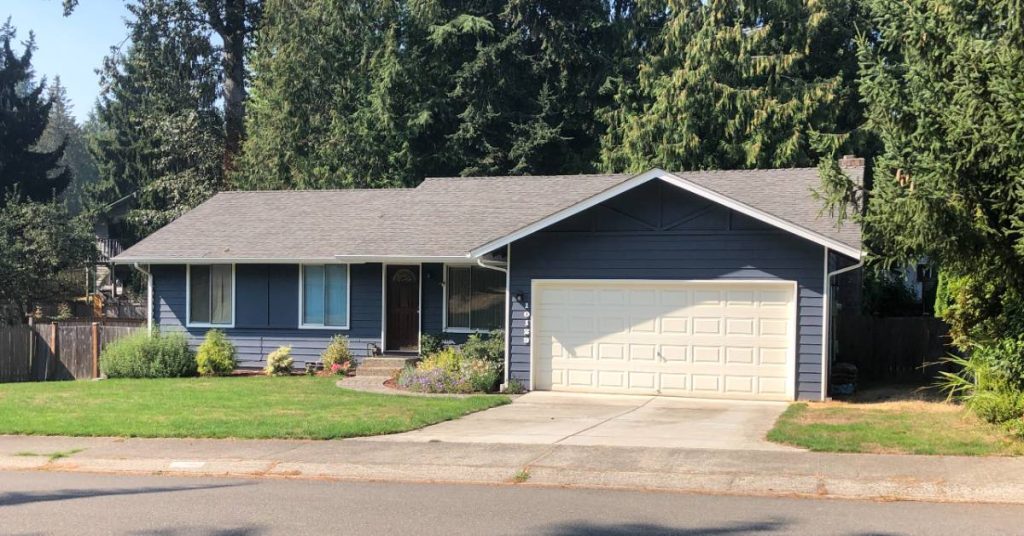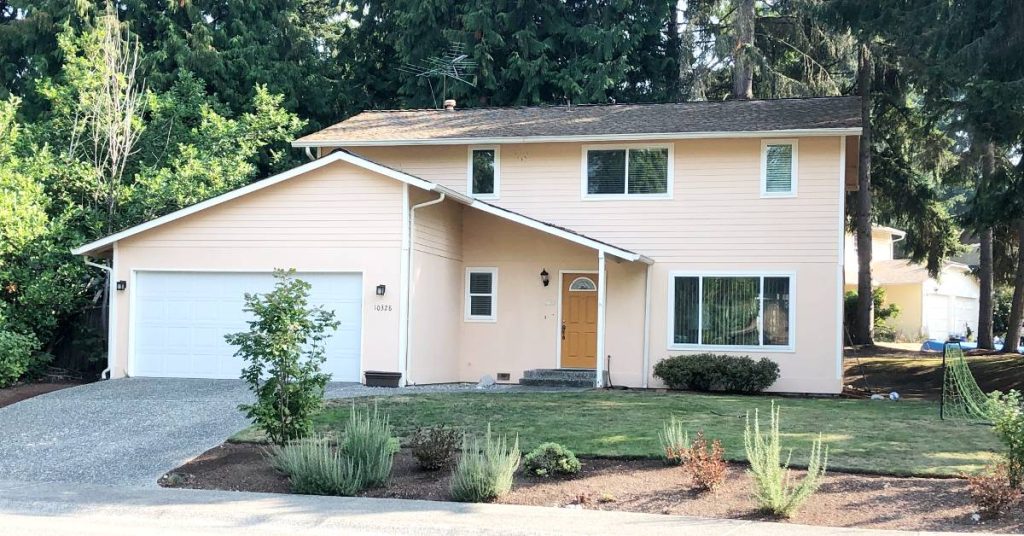You purchase your first home. You settle in and have your first Christmas and child’s first birthday there.
Then, someone knocks on the door one day and says, “I actually own this home. Leave.”
What do you do?
In this rare but possible scenario, title insurance would kick in. It would pay for legal fees to fight such a claim and reimburse you for the home if you lose it in a court of law.
That’s why a revised rule for conventional loans allowing Attorney Opinion Letters (AOLs) in lieu of title insurance is gaining attention. Are AOLs safe?
Check today’s best homebuying programs.
What is an Attorney Opinion Letter vs title insurance for a home mortgage?
In regards to a residential home mortgage, an AOL is a letter from an attorney stating that a property’s title and ownership history is “clean.” There’s little or no risk that someone has a lawful ownership claim or lien against the property.
Title companies also research the property and give such an opinion. But they back it up with insurance in case of errors or undiscoverable facts at the time.
Only for conventional loans
If you’re getting an FHA, VA, or USDA loan, the decision is made for you. These programs don’t accept Attorney Opinion Letters.
Only conventional loans underwritten by Fannie Mae and Freddie Mac standards are eligible.
Why would someone want an Attorney Opinion Letter instead of title insurance?
There’s only one reason someone would want an AOL over title insurance: cost.
Title insurance can be downright expensive. Affordability is the reason conventional loan agencies Fannie Mae and Freddie Mac allow AOLs.
The agencies are seeking to reduce the upfront cost of homeownership by addressing one of its highest fees.
According to Fannie Mae, borrowers in its system that have used an AOL instead of title insurance save over $1,000 in closing costs.
Start your homebuying pre-approval.
What are the risks of an AOL?
If AOLs are less expensive than why haven’t they become the industry standard?
They come with added risk to the homeowner.
An AOL is based on research of the property’s ownership history at the time. While an attorney’s errors and omissions insurance may cover some losses, it won’t cover others.
For example, an AOL may not cover legal fees from fighting an ownership claim. It may not reimburse the homeowner for the value of the property if title issues were not discoverable at the time.
Does anyone advise against AOLs?
It’s no surprise that title companies don’t like the idea of AOLs. Their business relies on issuing insurance policies to homebuyers and refinancing homeowners.
Still, title professionals bring up valid points. CEO of World Wide Land Transfer Marc Shaw says in Forbes that an AOL would not protect owners against myriad invisible land mines such as undiscoverable mechanics liens, tax liens, forgeries, or property ownership technicalities.
But not all AOL naysayers are in the title industry. Far from it.
Two members of Congress issued a letter to Federal Housing Finance Agency head Sandra Thompson saying a homeowner would need to sue the AOL-issuing attorney. This would cause an undue financial burden, win or lose, due to legal fees.
Attorneys: Interestingly, not even all attorneys think AOLs are a good idea. Thomas Lofton, an attorney at Oseran Hahn in Bellevue, Wash. says, “This is not something we do. We would always recommend that clients have title insurance.” Lofton goes on, “There is a lot of property theft happening across the country right now with remote notary scams.”
An AOL is an attorney’s best guess of the homeowner’s risk based on information at the time.
Although a bad example, it’s a little like getting a professional opinion that you’re a great driver and therefore don’t need car insurance. It works great until it doesn’t.
Title insurance, on the other hand, takes up the homeowner’s case, paying legal fees and even reimbursing the property value, even if new evidence arises years later that was not discoverable at the time of home purchase.
Get started on buying a home now.
Who likes AOLs, then?
Interestingly, Fannie Mae and Freddie Mac are big proponents.
The argument is that this provision will encourage homeownership by shaving $1,000 or more off of closing costs, according to their data.
Plus, the biggest loss to Fannie and Freddie is the loan balance, one of the many of millions of loans it has in its portfolio.
Statistically, skipping title insurance may be a profitable gamble for the buyer, too.
According to CEIC Data, title insurance companies have paid out anywhere from 2.2% to 8.5% of premiums since 2012 for losses and costs related to losses like legal fees.
Compare that with loss payouts for auto and home insurance companies of an eye-popping 60%.
In short, your risk of title problems is much smaller than that of an auto accident. But if the dice aren’t in your favor, the losses could be catastrophic.
So is an AOL an acceptable risk?
Fannie Mae and Freddie Mac look at risk differently than an individual homeowner.
These agencies are fine with a few percent of its loans going bad for a variety of reasons, be it foreclosure or title issues. And for them, AOLs are a totally acceptable risk.
In fact, Fannie Mae has purchased 10,000 loans with AOLs since 2009 (they have allowed it under more strict guidelines prior to wider acceptance since 2022). The agency states it has not experienced any losses on these loans.
But a homeowner doesn’t have the advantage of having millions of homes. A title issue, while not a big deal to one of the world’s biggest corporations, has huge implications for an individual.
A title issue means, potentially, tens of thousands in legal fees, paying undiscovered liens that aren’t yours, or even losing the home.
Yes, chances of catastrophe are small, but the consequences are massive.
Check today’s best homebuying programs.
Are AOL cost savings worth the risk?
To use an AOL, you should be saving a lot of money upfront.
But how much you spend on title as the buyer varies drastically by state.
When reviewing cost, it’s important to know there are two kinds of title insurance policies:
- Lender’s title policy: Protects the loan
- Owner’s title policy: Protects the owner and home
In many states, the seller pays for the owner’s policy. So as a buyer, you gain nothing by using an AOL instead of your owner’s policy.
The seller pays the owner’s policy in 19 states, says real estate writer Ilyce Glink. The buyer bears that cost in 19 states and the District of Columbia. It’s split or negotiable in remaining states
According to the First American Title fee calculator, following are example title fees on a $500,000 home purchase with a $450,000 loan amount.
| $500k home $450k loan | Lender’s policy (protects loan amount) | Owner’s policy (protects home value) | Buyer cost |
| Seattle, Washington | $846 | $1,891 | $846 |
| Dallas, Texas | $2,960 | $363 | $3,223 |
| Sacramento, Calif. | $942 | $1,743 | $942 |
| Raleigh, NC | $1,261 | $0 | $1,261 |
Homebuyers in Dallas have a lot more to save than a homebuyer in Seattle, thanks to local title costs and customary real estate practices.
If you spend, say, $500 on an AOL, you might save $2,700 in Texas. In other areas, you may only save a few hundred dollars if anything.
Part of your decision will be determining title and AOL costs, and seeing if the savings justify the risks.
How much does an AOL cost?
The cost of an AOL is harder to pinpoint.
A major lender offers AOLs as part of the closing process for $350 says Banker and Tradesman. Another company charges $1,500 for a roughly $400,000 loan, but includes “law firm protections” if issues arise.
The cost could vary widely with an individual lawyer. While Forbes reports that the average hourly fee for legal services was $313 in 2022, it’s hard to say how many hours a lawyer would take to complete the AOL.
If AOLs become common practice, expect to see companies or law firms charging flat rates, or at least less confusing fee structures compared to title insurance companies.
Strategy: get an owner’s title policy but use an AOL to replace lender’s title
As mentioned, two title insurance policies are issued with most sales: a lender’s policy and owner’s policy.
The lender’s policy protects the lender for the loan amount. The owner’s policy covers the home price and owner.
Loan agencies and lenders do not require that the homeowner get an owner’s title policy. You only need:
- Lender’s title policy, or
- An AOL
One strategy is getting an AOL for the lender’s title policy, but purchasing title insurance for your own protection.
This doesn’t save as much money as using an AOL in lieu of both policies, but it protects you from the worst-case scenario.
A great use case: refinancing
An AOL could make a lot of sense for a refinancing homeowner.
You already have an owner’s title policy from when you purchased the home. That doesn’t expire when you refinance.
Only your lender’s title insurance is negated when you refinance, says Realty Title.
The lender — and either Fannie Mae or Freddie Mac — are bearing the risk of the AOL. You and the home are protected, assuming you didn’t opt for an AOL in lieu of an owner’s policy when you purchased the home.
Check today’s refinance rates.
Should you consider an Attorney Opinion Letter?
No one can decide which route to take besides you. Much will depend on your tolerance for risk, your traditional title fees, and AOL cost savings.
Just go into it realizing that an AOL is not the same thing as title insurance and could pose risks you’d rather not deal with.




